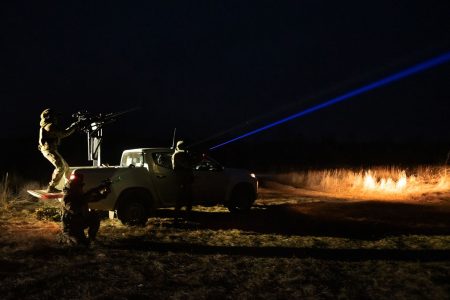The U.S. military has constructed a massive pier in northern Gaza as part of a $320 million effort by the Biden administration to open a sea route for humanitarian aid to reach the region. The 1,500-ft long structure is a risky endeavor due to the ongoing conflict between Israel and Hamas and the challenges of delivering aid through the Rafah border. Major General Pat Ryder is confident that aid will be successfully delivered through this new maritime route, with humanitarian groups ready for the first shipments.
As the war between Israel and Hamas intensifies, the sea route has been described as a costly solution to a problem that may not exist, as land crossings could potentially handle all necessary aid deliveries. Concerns have been raised about the aid potentially falling into the hands of Hamas, jeopardizing efforts to eliminate the group from the region. Ophir Falk, a foreign policy adviser to Israeli Prime Minister Benjamin Netanyahu, has stated that thousands of aid trucks have been allowed into Gaza and will continue to be allowed, despite Hamas’s interference with aid distribution.
Anastasia Moran, an associate director for the International Rescue Committee, has noted a 13% increase in truckloads of aid entering Gaza recently. The conflict between Israel and Hamas has resulted in a high number of civilian casualties, with Palestinian health officials estimating over 35,000 deaths, while Israeli officials estimate around 16,000. A U.N. report from May 8 found that nearly 13,000 women and children have been killed in the war. The Israeli military has pledged to continue distributing aid in accordance with international law and to allow in more aid while safeguarding aid workers.
The Biden administration’s initiative to establish a sea route for aid delivery comes as the conflict between Israel and Hamas reaches critical levels near the Rafah border. Some officials argue that the effectiveness of the maritime corridor depends on Israeli approval and cooperation, as they ultimately control the flow of aid into Gaza. Despite concerns about funding Hamas through aid deliveries, Israeli officials have pledged to continue allowing aid trucks into the region and to uphold international regulations. The new sea route could significantly impact the distribution of aid in Gaza and provide a crucial lifeline to those in need.
The completion of the massive pier in northern Gaza marks a significant milestone in the Biden administration’s efforts to establish a sea route for humanitarian aid delivery. The construction of the pier is a risky undertaking due to the ongoing conflict between Israel and Hamas and the challenges of delivering aid through the Rafah border. Major General Pat Ryder has expressed confidence in the success of aid delivery through this new maritime route, with humanitarian organizations prepared for the first shipments. The initiative has the potential to significantly impact the distribution of aid in Gaza and provide crucial support to those in need, despite concerns about potential risks and challenges.














